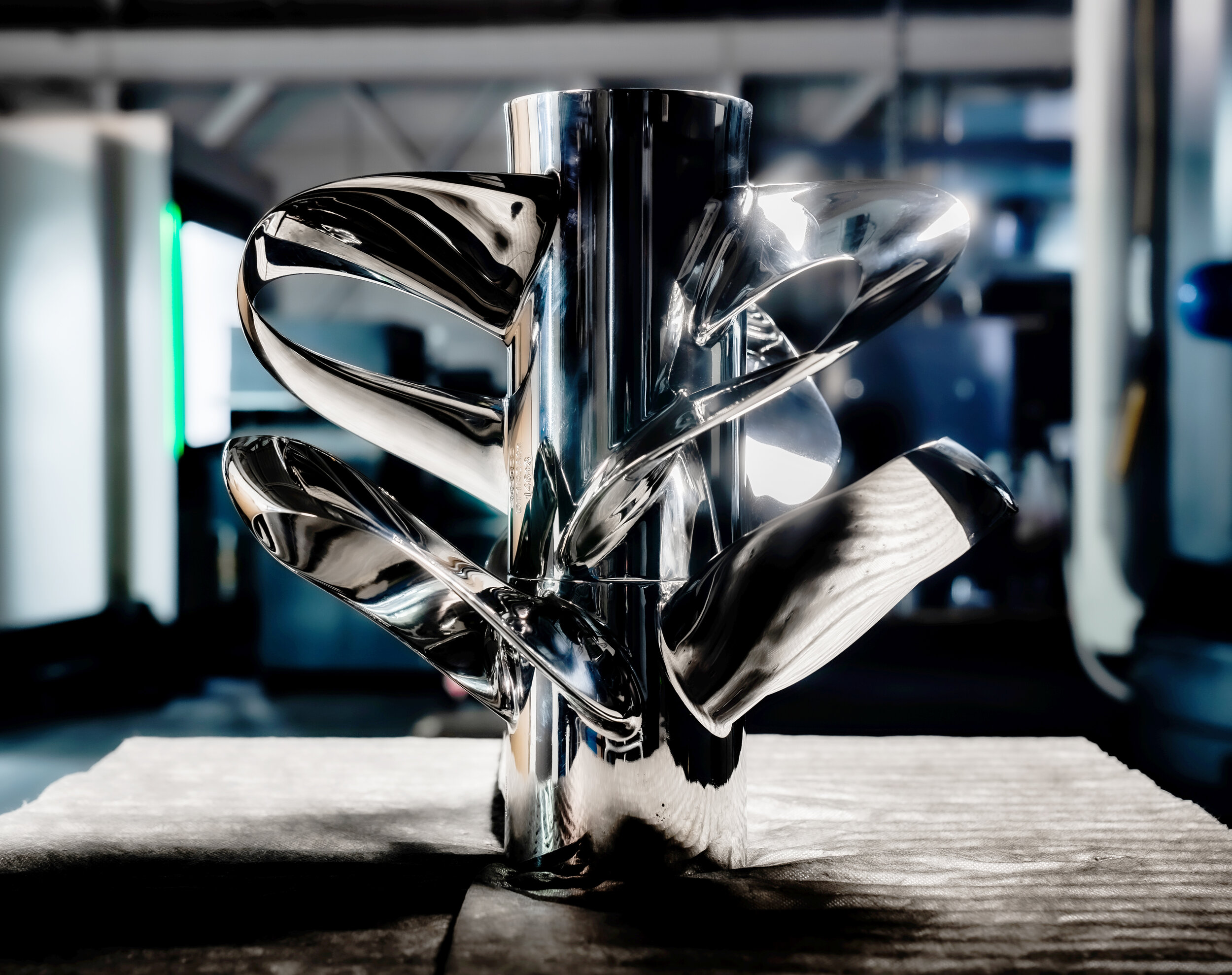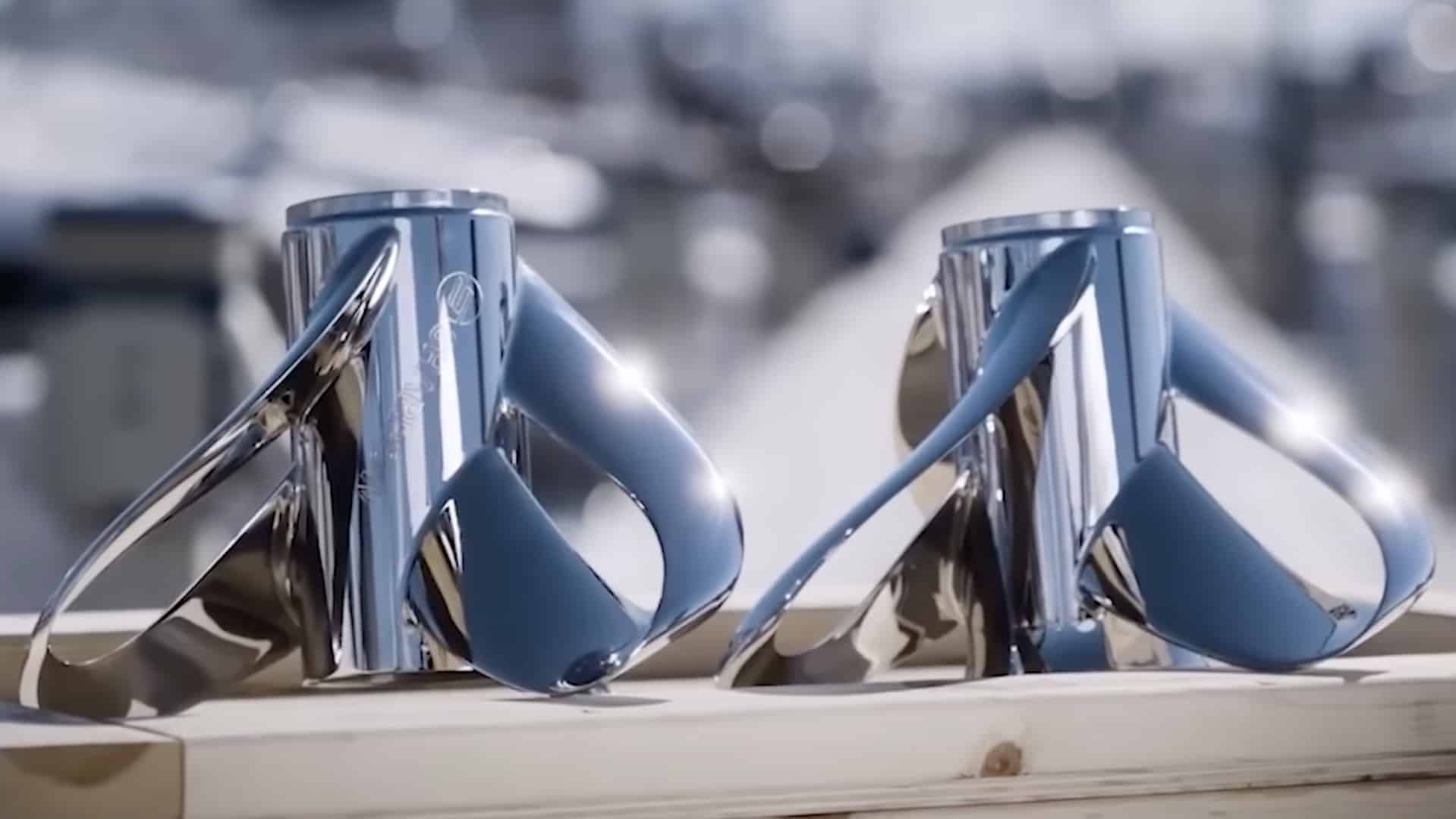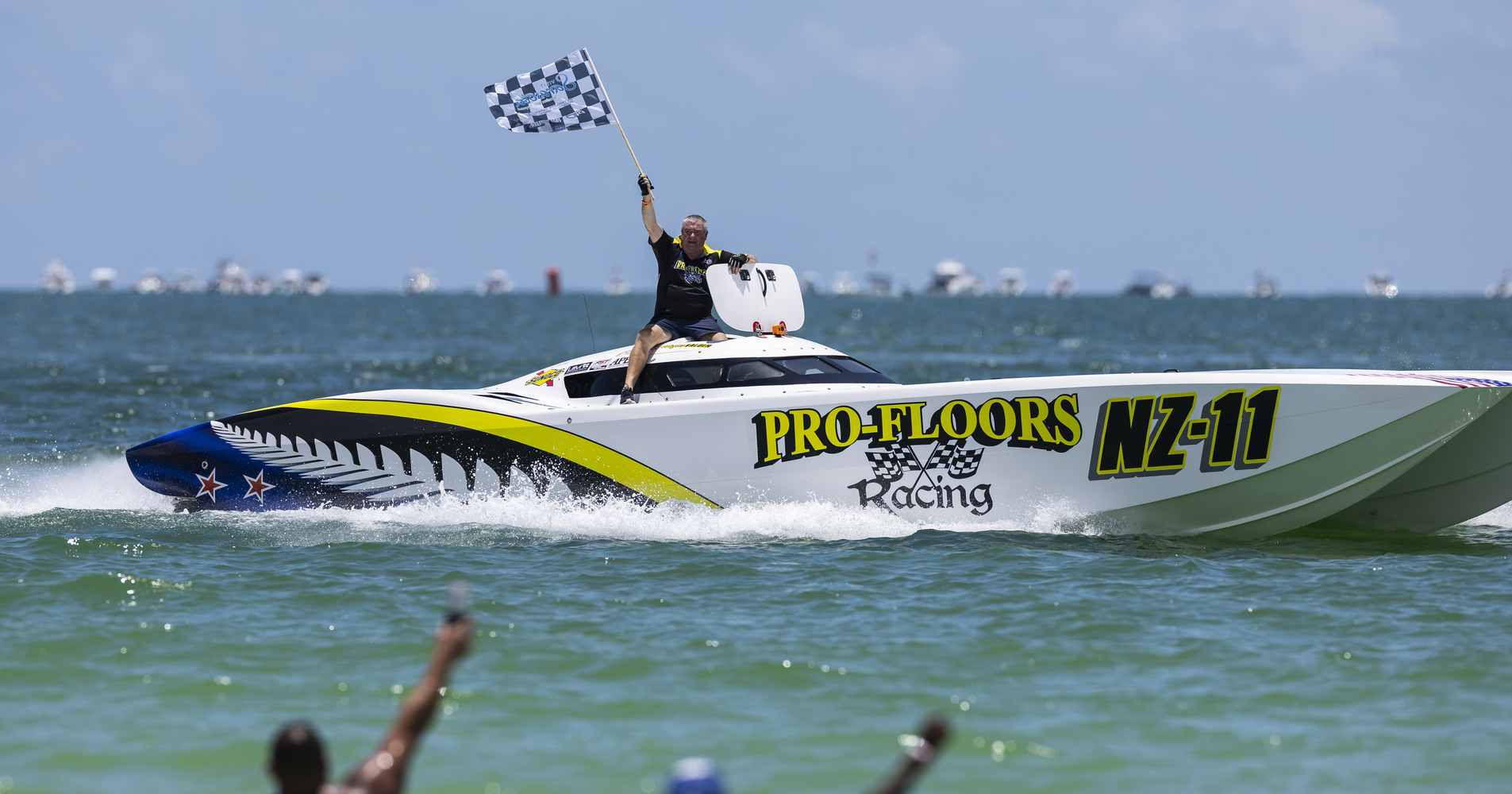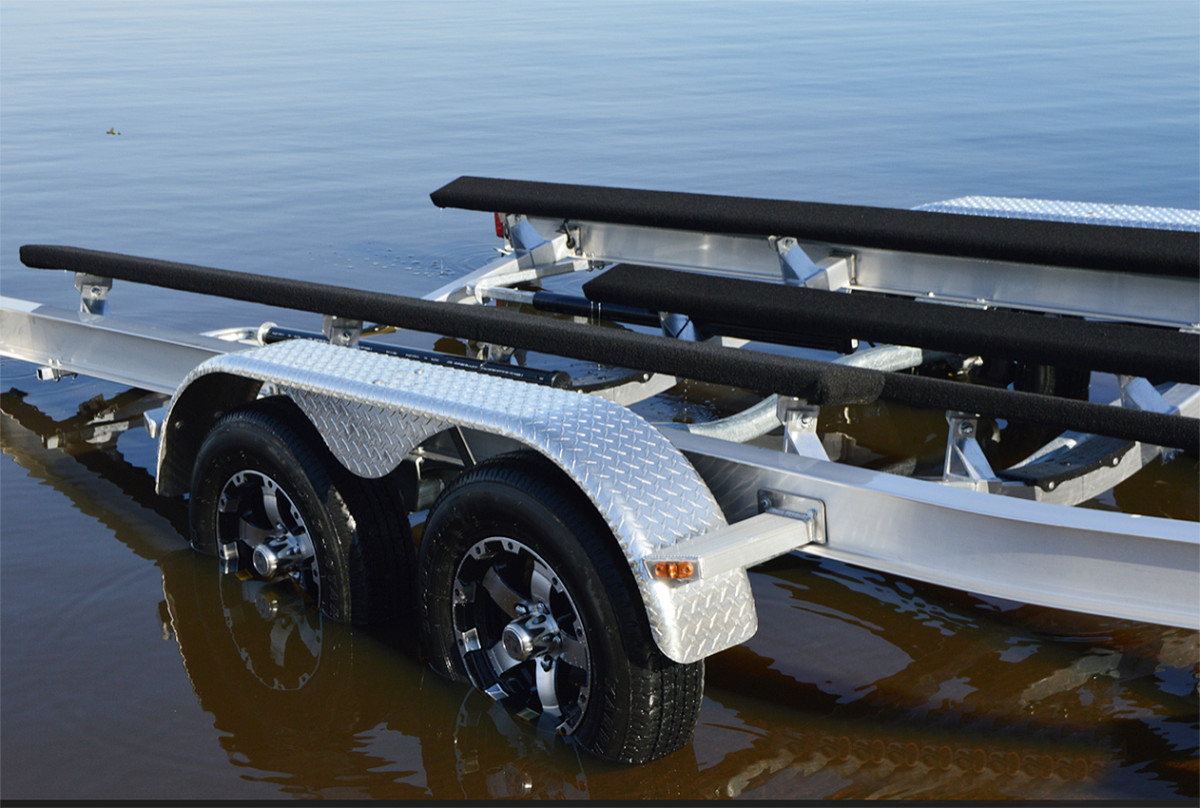Sharrow Propeller: Torque, Speed & Efficiency Uncovered
The Sharrow Propeller has been making waves in the marine propulsion industry as a groundbreaking innovation, offering significant improvements in torque, speed, and efficiency. This cutting-edge propeller technology is a major advancement, providing solutions to traditional propeller design problems such as tip cavitation and vortex generation. As a result, it has the potential to revolutionize the performance of watercraft and the overall boating experience.

Developed by Sharrow Marine, the innovative Sharrow Propeller has been extensively tested and evaluated, yielding consistently impressive results. Independent evaluations, such as those by BoatTEST, reveal its ability to provide increased top-end speeds, improved fuel economy, and reduced noise and vibration levels compared to conventional propellers. Boat owners and marine enthusiasts alike are taking note of its potential to reshape the future of marine propulsion systems and deliver an optimized boating experience.
Design and Engineering
Development Process
The Sharrow Propeller is a breakthrough in propeller design, offering significant improvements in torque, speed, and efficiency compared to traditional propellers. The development process of this innovative design began with a thorough understanding of the limitations and challenges faced by conventional propellers. Greg Sharrow, the inventor behind the Sharrow Propeller, sought to create a solution that would overcome these limitations and deliver better performance while generating less noise and vibration.
University of Michigan Collaboration
To validate the performance and potential of the Sharrow Propeller design, a collaboration was initiated with the University of Michigan's Marine Hydrodynamics Laboratory. This partnership allowed for extensive testing and analysis of the Sharrow Propeller in a controlled environment while leveraging the knowledge and expertise of leading marine researchers. The results of this collaboration demonstrated the effectiveness of the Sharrow Propeller, providing compelling evidence of its superiority over traditional designs in terms of speed, efficiency, and torque.
Patents and Innovation
The innovative design of the Sharrow Propeller has led to the granting of numerous patents, ensuring its unique characteristics are well-protected. These patents reflect the groundbreaking nature of the design, which incorporates a continuous-loop geometry and eliminates the need for blade tips. This innovative approach results in several advantages, including:
- Higher speed per RPM
- Improved handling
- Reduced noise and vibration
The Sharrow Propeller has clearly demonstrated its ability to revolutionize the marine propulsion industry with its innovative approach to both design and engineering. Its collaboration with the University of Michigan and its growing list of patents are testaments to the potential of this advanced technology to disrupt the status quo and provide significant performance improvements for an array of marine vessels.

Performance and Efficiency
Speed and Torque
The Sharrow propeller demonstrates significant improvements in speed and torque compared to traditional propellers. In one test, the Sharrow Propeller™ Model MX-1 recorded an average speed of 48 MPH at 5850 RPM, making it faster and more efficient across various speeds. Furthermore, the propeller has been reported to have a 17% reduction in torque while accelerating.
Fuel Efficiency
Sharrow propellers have displayed remarkable fuel efficiency gains in numerous tests. For example, on a boat equipped with 300-hp diesel engines, the Sharrow propeller showed a 46% improvement in fuel efficiency at 18 knots. In another test featuring World Cat 325 DC with twin Yamaha 300-hp motors, the Sharrows maintained a [36% advantage in miles per gallon (MPG)](https://www.sharrowmarine.com/performance-reports/2022/12/20/boattest-captains- report-sharrow-mx-propeller-review-world-cat-325-dc-with-twin-yamaha-300-hp-motors) at 20 to 25 mph. Overall, these findings highlight the fuel efficiency benefits of Sharrow propellers in various speed ranges.
Cavitation and Vibration
The unique design of the Sharrow propeller helps reduce cavitation and vibration. Cavitation is a performance-limiting factor for traditional propellers, as it causes tip cavitation, induced drag, and noise pollution. By mitigating these issues, the Sharrow propeller enables better performance and efficiency, as well as a smoother and quieter ride for boat users. Although specific data on cavitation and vibration reduction are not readily available, the overall improvements in performance, fuel efficiency, and torque suggest that the Sharrow propeller effectively addresses these challenges.

Applications and Comparisons
Boating and Handling
The Sharrow Propeller offers several advantages in terms of boating and handling. One significant benefit is the reduced occurrence of tip vortices, which allows the propeller to maintain its bite and provide superior handling during tight turns. In addition, the unique design of Sharrow Propellers enhances the boat's ability to perform in reverse, making it more manageable and maneuverable.
In terms of efficiency, Sharrow Propellers demonstrate a 16% increase in speed at idle RPM of 650 when compared to conventional propellers. Additionally, the increased efficiency allows for better range, as miles per gallon is also improved by 16%.
Military and Commercial Uses
The Sharrow Propeller's improved performance, efficiency, and handling also make it highly suitable for military and commercial applications. The reduction in tip vortices, combined with the propeller's ability to stay "hooked-up" during tight turns, offers significant advantages for vessels that need to navigate challenging environments, such as catamarans and powerboats.
By aligning with various industry standards, such as those set by the International Council of Marine Industry Associations (ICOMIA), Sharrow Marine ensures its propellers are designed for reliability and performance in the military and commercial sectors.
Sharrow MX and Conventional Props
A side-by-side comparison between the Sharrow MX3 and traditional stainless-steel propellers reveals the Sharrow MX3's increased performance and maneuverability. The peak efficiency curve of the Sharrow MX propellers is wider than that of conventional props, which translates to improved efficiency across a broader range of RPMs.
The Sharrow MX3 propellers also offer better handling characteristics than conventional propellers, allowing for smoother and more controlled turns in various conditions. The innovative design of the Sharrow Propeller makes it a compelling choice for boating enthusiasts and professionals alike.

Testing and Validation
BoatTest Collaboration
In a real-world testing scenario, BoatTest collaborated with Sharrow Marine to evaluate the performance of the Sharrow propeller. The testing involved comparing Sharrow propellers to standard propellers on a World Cat 325 DC with twin Yamaha 300 HP motors. The BoatTest captains found that the Sharrow propeller offered improved speed and fuel efficiency compared to traditional propellers.
CFD Simulations
Sharrow Marine has also utilized Computational Fluid Dynamics (CFD) simulations to optimize the design and efficiency of their propellers. CFD simulations allow engineers to analyze fluid flow, pressure, and other factors affecting propeller performance. By incorporating CFD simulation results into their design process, Sharrow Marine can ensure their propellers deliver optimal performance and efficiency in real-world boating applications.
Computer Modeling and University of Michigan Collaboration
Sharrow Marine partnered with the University of Michigan's Marine Hydrodynamics Laboratory to conduct further testing and validation of the Sharrow propeller using advanced computer modeling and simulation techniques. The collaboration allowed Sharrow Marine to access the expertise of renowned naval architects and hydrodynamicists, which significantly contributed to determining the optimal design and performance of the Sharrow propellers.
Additionally, the use of a dynamometer at the University of Michigan's facility provided accurate, controlled measurements of the propeller's torque and efficiency under various operating conditions. This rigorous testing methodology helped validate the Sharrow propeller's performance claims and provided invaluable data for ongoing research and development efforts.
Manufacturing and Adoption
Additive Manufacturing
Sharrow Engineering has developed a groundbreaking propeller design known as the Sharrow Propeller™, which offers numerous performance improvements, such as higher speed per RPM and increased efficiency. The Sharrow Propeller™ utilizes innovative additive manufacturing techniques to produce sturdy and fuel-efficient components. This new technology allows for the creation of intricate structures within the propeller, leading to better handling and reduced vibration.
In addition to manufacturing propellers for marine vehicles, the applications of Sharrow Engineering's innovations also extend to drones. The improved efficiency of the Sharrow Propeller™ can potentially enhance flight time, power management, and overall performance of drone technology.
Early-Adopter Registration
Anticipating the strong demand from customers, Sharrow Marine has announced plans to mass-produce a more affordable, cast version of the propeller. As part of this initiative, Sharrow Marine is accepting advance orders and welcoming people to join their early-adopter registration program. Individuals and corporations interested in getting ahead of the curve and benefiting from the cutting-edge Sharrow Propeller™ technology can sign up for the early-adopter registration.
This registration process allows customers to stay updated on the latest developments regarding the manufacturing and release of the Sharrow Propeller™. It also offers them the opportunity to be among the first to experience and provide valuable feedback on the propeller's performance, thus playing a significant role in shaping the future of this revolutionary technology.

Future Implications
The Sharrow Propeller is a groundbreaking innovation in marine propulsion technology, which promises to deliver significant benefits in terms of torque, speed, and efficiency. One of the key aspects of this new propeller design is its ability to achieve maximum advance rate and efficiency at an earlier point than standard propellers, allowing boats to travel at faster speeds with the same engine RPM 1.
This improvement in performance has the potential to transform the marine industry in various ways. For starters, improved efficiency could lead to significant fuel savings, which is not only beneficial for the consumer but also contributes to reducing the environmental impact of boating. In fact, the Sharrow Propeller was found to be 46% more fuel efficient at 18 knots on 300-hp Diesel engines2.
Moreover, speed improvements can also boost the competitiveness of commercial vessels, such as ferries and fishing boats, which would benefit from shorter travel times and the ability to cover longer distances with the same fuel consumption. With its enhanced ability to plane at a lower RPM, the Sharrow Propeller also helps optimize boat performance in various sea conditions3.
Midrange cruise speed efficiency is also a notable aspect of the Sharrow Propeller. By performing "S" or "U" turn maneuvers at a slow planing cruise, typically around 3500 RPM, the propeller demonstrates its strengths in maintaining efficiency at midrange speeds4.
There are other potential applications for the Sharrow Propeller that could arise as a result of its unique characteristics. For example, its increased efficiency and minimized noise production might make it a more viable option for environmentally sensitive areas or noise-restricted zones, where traditional propellers may be prohibited.
In summary, the future implications of the Sharrow Propeller extend well beyond simple performance improvements. Its impact on fuel efficiency, environmental sustainability, and various marine applications makes it a promising innovation with the potential to reshape the way we approach marine propulsion.
Footnotes
- (https://www.springwise.com/innovation/mobility-transport/a-next-generation-propeller-is-quieter-and-more-efficient) ↩
- (https://www.sharrowmarine.com/performance-reports/2022/12/16/sharrow-props-46-more-fuel-efficientnbspat-18-knots-on-300-hp-diesel-engines) ↩
- (https://powerboatmagazine.co.nz/is-this-the-propeller-of-the-future/) ↩
- (https://www.sharrowmarine.com/propulsion-revolution) ↩
Charlie is Editor-in-Chief of Sea Magazine






